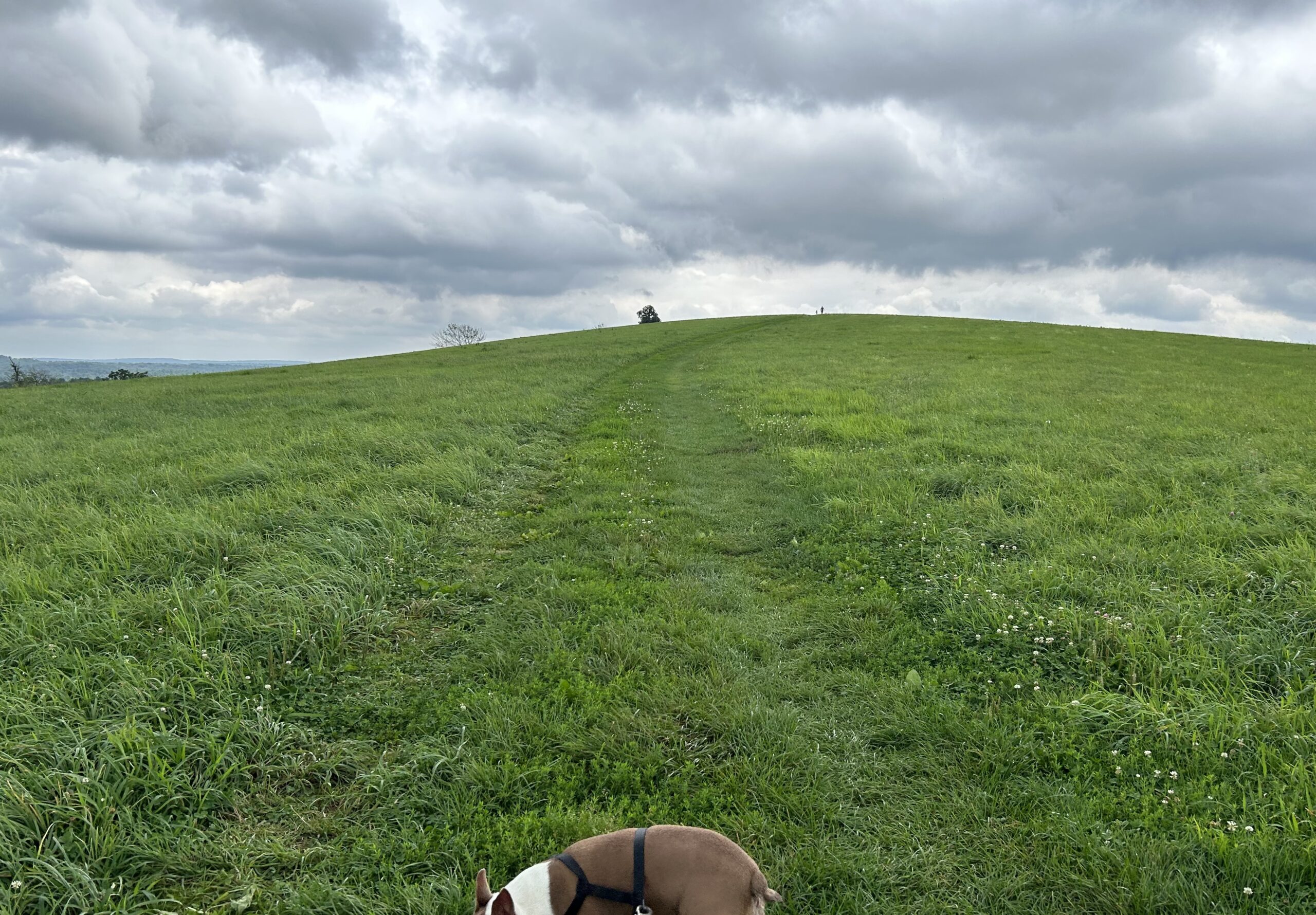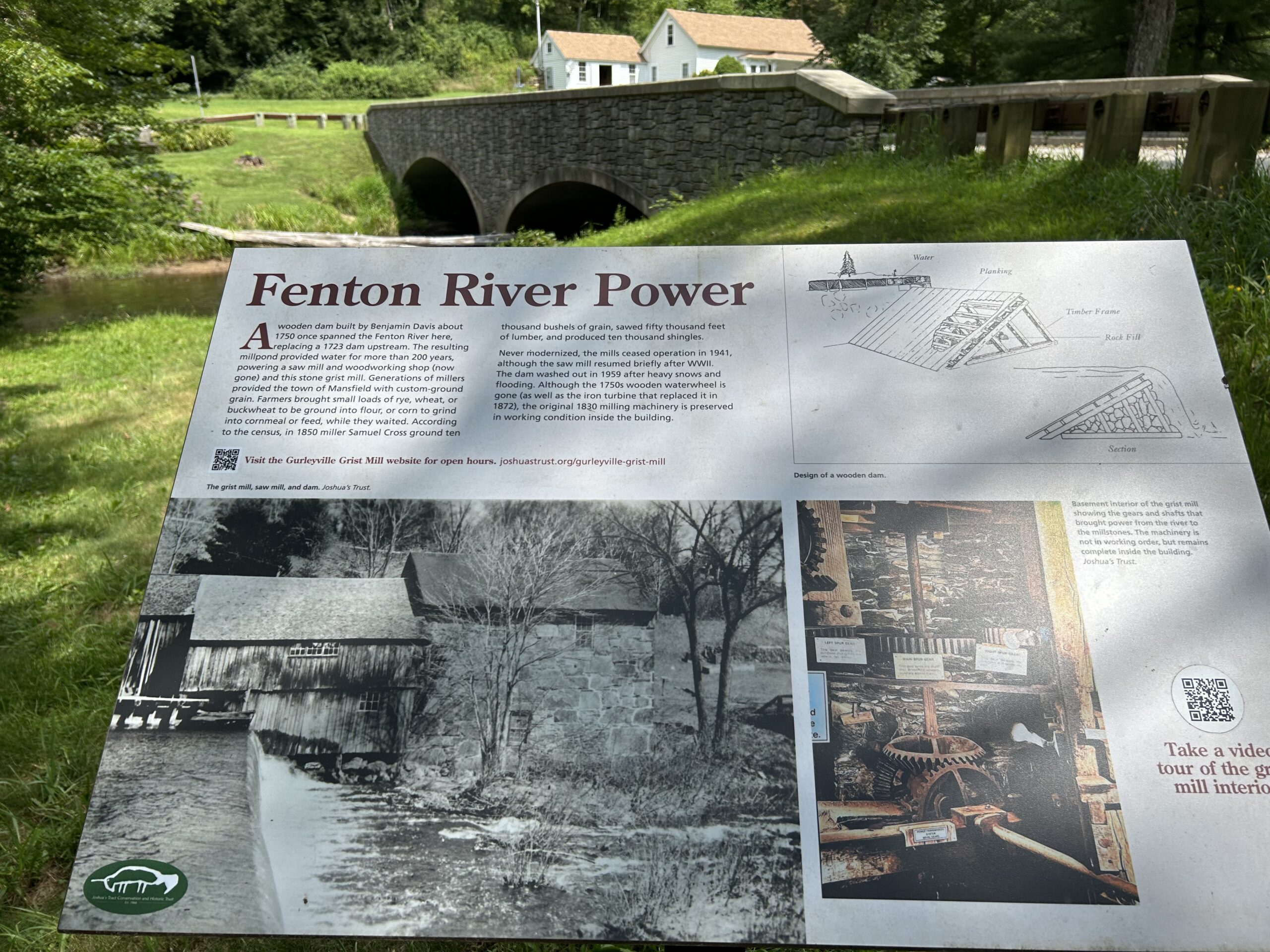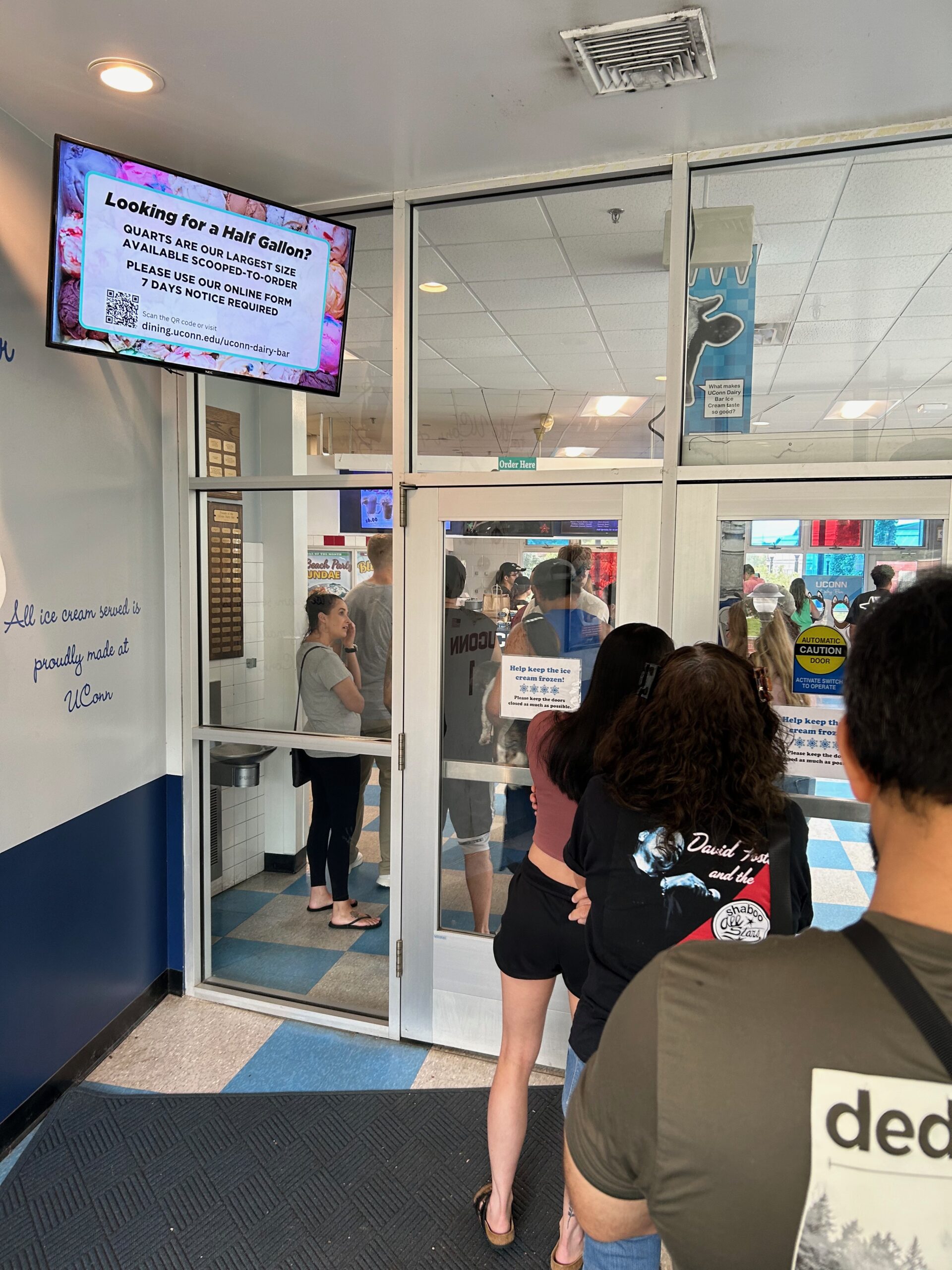Gurleyville Grist Mill, Fenton River And UConn Walk With Ice Cream
“Everybody walks past a thousand story ideas every day. The good writers are the ones who see five or six of them. Most people don't see any.” –Orson Scott Card
Home of the iconic Horsebarn Hill, the University of Connecticut College of Agriculture, Health and Natural Resources is a treasure. Land, sky, ice cream (and other products)–this is a working landscape not to be taken for granted. And the public can visit, view cows, horses. The accompanying barns, sheds, pastures punctuate the rolling scenery. Nearby, down in the hollow is Gurleyville, where Connecticut Governor Wilbur Cross grew up.
This, from the National Register of Historic Places Inventory–Nomination form (1975; the numbers refer to the sketched map included at the link): “The ability of the district to recall the 19th century is aided by the detailed documentation written by one villager born in 1862: Wilbur L. Cross, the popular and progressive governor of Connecticut from 1931 to 1939. Cross was born in the house across from the mill (2), then lived in the Gurley house (11) and worked in the store across the street (10). He describes in detail the contents of the store, the horse-trading and political discussions which took place there, the family disputes settled in the home of Justice of the Peace E.B. Smith (17), lessons in the old school (12) in which the children sat four abreast at one desk, his father's job as miller and in many other ways, reveals the fabric of life in a village where everyone was acquainted if not related. …”
(The day of our visit, the iconic gold-domed Wilbur Cross building at UConn was encased in scaffolding.)
Interested in ingenuity, design and engineering? Let's go to Gurleyville Grist Mill, owned by Joshua’s Trust Conservation and Historic Trust, Inc. The trust owns a miller's house and land holdings in the area. The blue-blazed Nipmuck Trail crosses the property and follows the Fenton River where the remains of several mill sites and raceways may be seen.
#rivers https://t.co/uRWMu8Qhvv pic.twitter.com/0IscquUCqy
— Moo Dog Press (@MooDogPress) August 4, 2024
From the official site: “Joshua’s Tract Conservation and Historic Trust, Inc. is a nonprofit and largely volunteer regional conservation organization protecting more than 5,000 acres in Northeastern Connecticut. Some properties are owned by the Trust and others are protected by conservation easements, methods that assure that those lands will remain open space and protected from development, forever.
“Joshua’s Trust works in a region that includes
parts of Windham, Tolland, and New London counties. We maintain 42 miles of walking trails for the public to appreciate and enjoy. In addition to the land we protect, we maintain two sites of historic significance: the Gurleyville Grist Mill and Atwood Farm, our headquarters, both located in Mansfield Center.”
They welcome visitors, new members, donations to support their (great, in our opinion) work. For a list of Joshua's Trust property holdings, see https://joshuastrust.org/property-list/.
Yes indeed. I graduated from UConn in '80 and only visited when my kids were young. My oldest later got a degree in manufacturing engineering form Boston University. He did like the visit!😁
— Peter Petrides (@HappyPete55) August 5, 2024
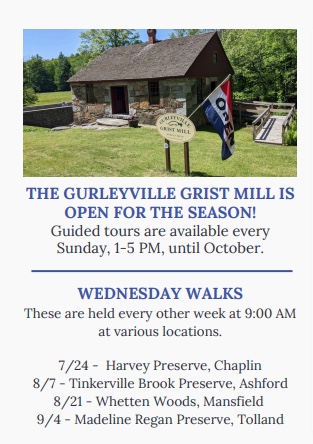
Sundays and information from Joshua's Trust summer newsletter 2024. Linked to the Joshua's Trust site for more information.
Summer. The ripest curve of the season, time to enjoy peak flavor of produce grown in gardens and on farms. Remember that the long hours of sunlight slip away a minute each day – the earth is shifting and the season will turn.
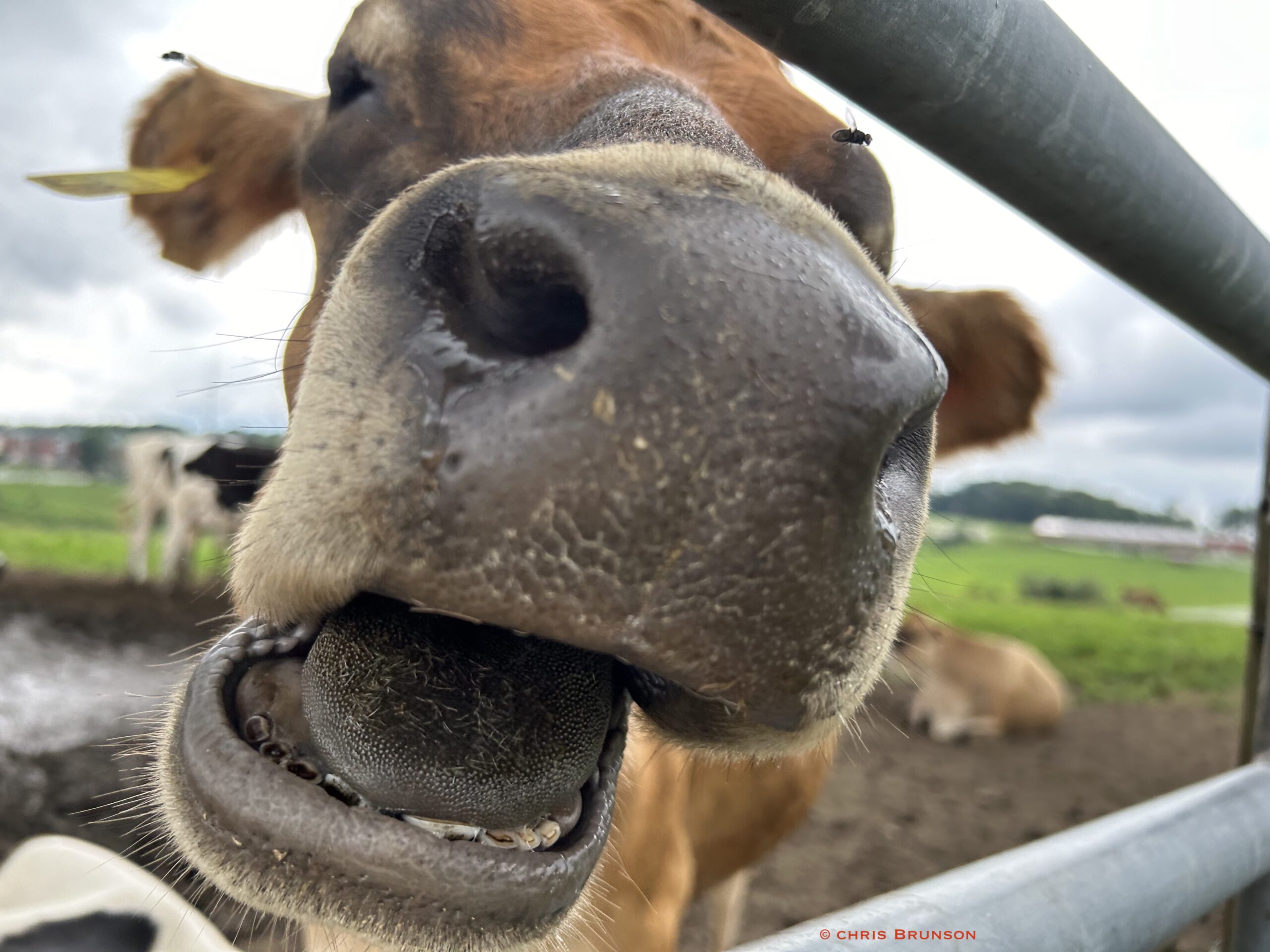
Hello. On a walk across Horsebarn Hill, over then down the side at the University of Connecticut, Storrs–in the town of Mansfield. Storrs is named for brothers Charles and Augustus Storrs, who donated land and money to start an agricultural school in Connecticut in 1880. This is a working landscape that produces food, provides pasturage, grows crops, and some of the milk from the dairy herd here is transformed into superb ice cream available at the UConn Dairy Bar.
Important notice as of June 4, 2024: “…while the interior of the Kellogg Dairy Center remains closed, visitors can see the robotic milkers in action from a viewing station outside of the building (do not enter the building). Visitors can also view animals on the pastures from Farm Lane and Horsebarn Hill Road, and from outside the livestock unit. Don’t forget to visit the UConn Dairy Bar. To learn more about the USDA’s recommendations on increased biosafety measures for dairy and poultry producers due to HPAI (Highly Pathogenic Avian Influenza), please visit the CT Department of Agriculture website: https://s.uconn.edu/hpai.
After a tour of the mill and visiting the Fenton River, time to head to the UConn Dairy Bar. The Sunday journey included a walk up and around Horsebarn Hill, viewing horses, watching the sky of storm clouds change and develop. Inhaling the aroma of cows, familiar and distinctive. Note that some barns are off limits to the public due to avian flu concerns–protecting the health of the herds and humans. Also, do not feed any animals seen. Dogs must be leashed and under control at all times while on campus. Do not let them near livestock, horses. (For those unfamiliar with hooved animals, they may kick and/or bite a strange four-legged or human visit, so please just look, enjoy the views.)
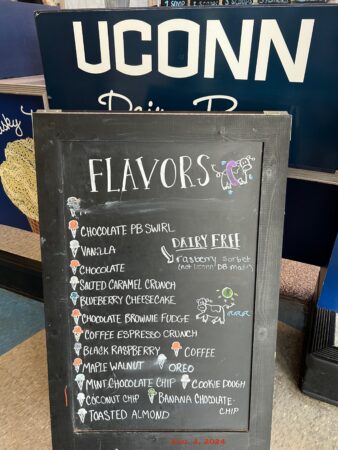
Yum. Inside the UConn Dairy Bar, pick from the daily selections. This one from Aug. 4. 2024 visit. Love the cow drawings.
Rivers and tributaries are abundant in Connecticut. “Connecticut is fortunate to be a ‘water rich' state, with more than 5,800 miles of rivers and streams. (This distance is roughly the equivalent of the U.S.-Canada and U.S.-Mexico borders combined!) These waters include large rivers (e.g. the lower Connecticut River) to much smaller, babbling brooks. Connecticut is also home to four federally designated Wild and Scenic River Systems – the Eightmile River, the lower Farmington River and Salmon Brook, the West Branch Farmington River, and the Wood and Pawcatuck River systems.” That's from CT DEEP, and for water quality monitoring and much more, visit https://portal.ct.gov/deep/water/inland-water-monitoring/river-and-stream-water-quality-monitoring.
With recent high humidity and temperatures plus abundant rainfall, insects and arthropods (ticks) are breeding like, well, flies. Don't let that stop any outdoor walk or activity, just use some common sense. Bring effective bug spray. If near the shoreline when the ocean breeze quiets, be forewarned that even multiple applications may not deter deer flies (and mosquitoes) as there are literally clouds of hungry flying biters seeking a blood meal (depending on weather and other conditions). They don't discriminate either – heading for cattle, horses, dogs, or humans. As they may have first fed on deer, a bird, rabbit, fox or woodchuck not only are they maddening, but may also serve as vectors to transfer any pathogens brewing in their tiny guts.
Be as scrupulous with sanitation at home, in camp or at the barn. Empty or stir up anything that holds standing water. Visit a feed store and ask for help with feed-through fly control, soothing shampoos, cleaning supplies – and work with your veterinarian for strategies to protect health and well-being. The Connecticut Agricultural Experiment Station offers a plain-talk informative handbook that is available in electronic format at www.ct.gov/caes and many resources to learn about preventing disease transmission.
Editor's note: This story has been updated.

